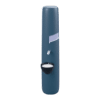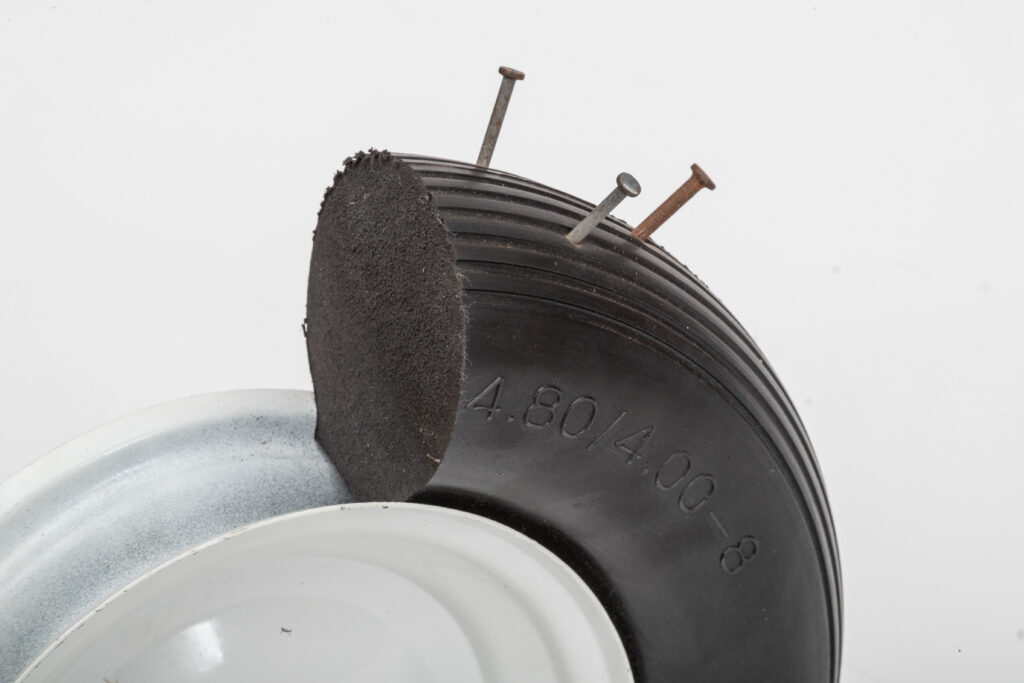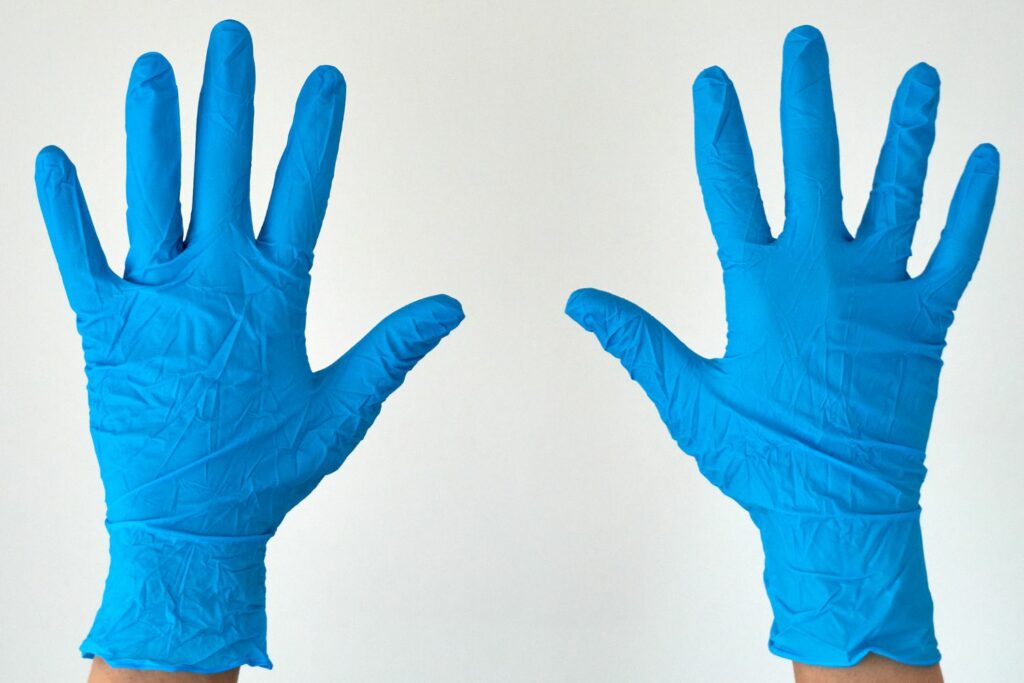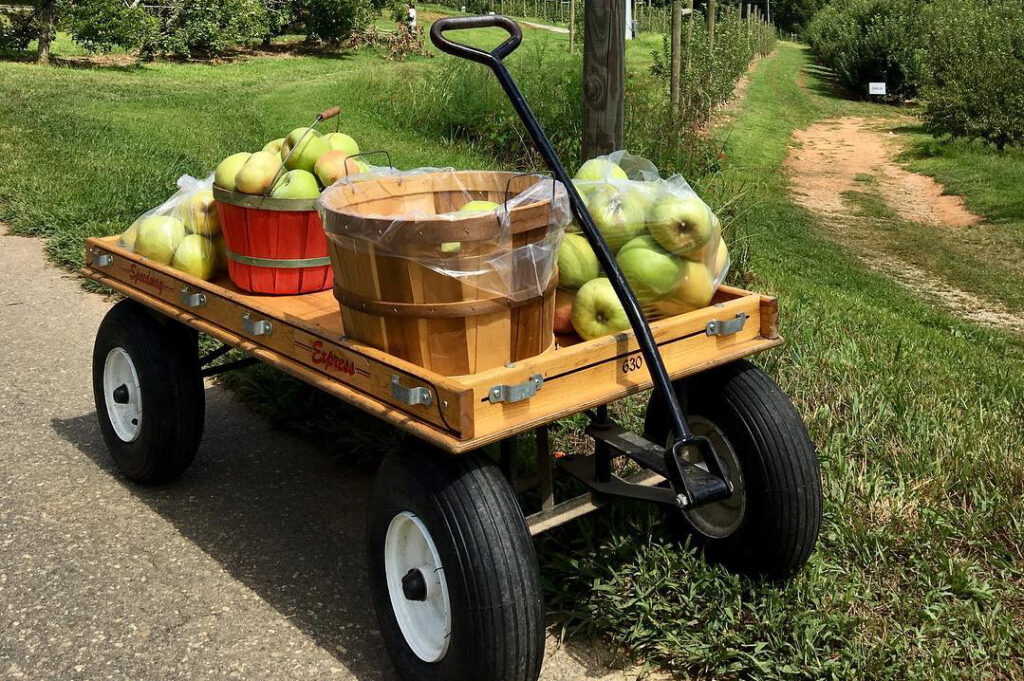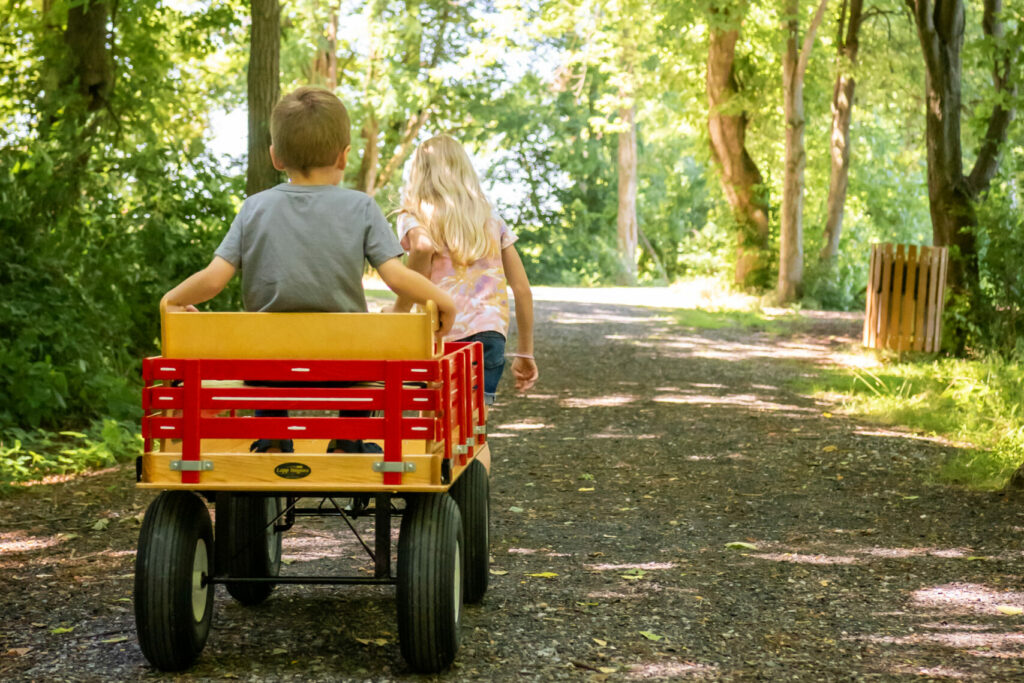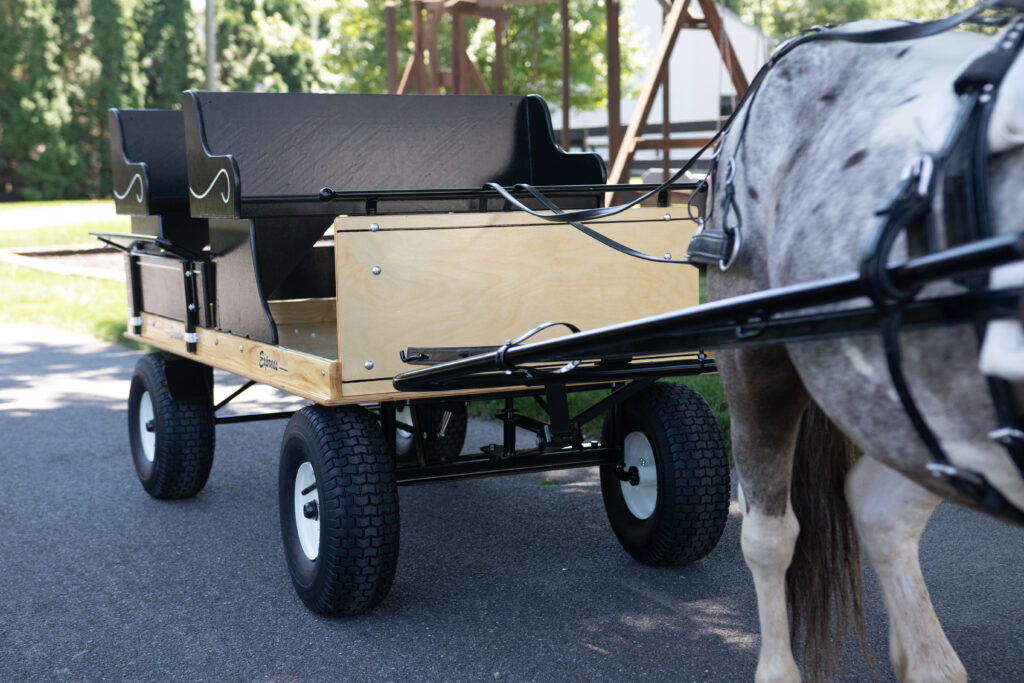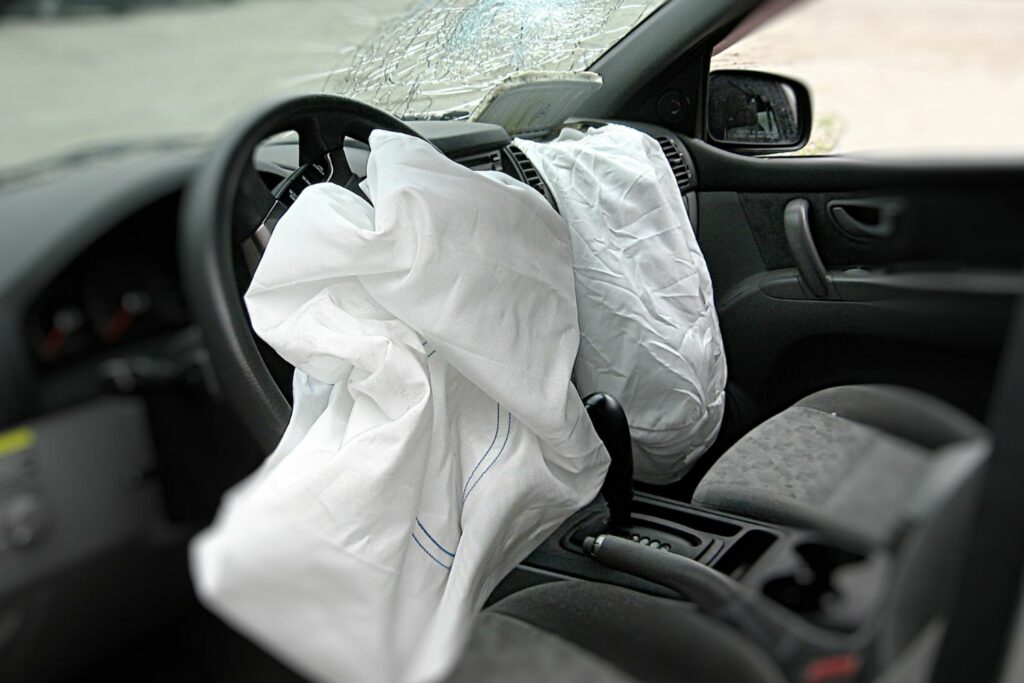Blog
Natural Rubber Tires For Garden Carts & More
Whether you are in the market for a garden cart, roofing cart, kids wagon, or produce wagon…wheels play an essential roll (pun intended). You want your carts to last and be with you for countless years to come. One way to ensure that happens is by getting the right natural rubber tires.
Table of Contents
Can Natural Rubber Be Used In Tires?
Yes! Natural rubber provides a great durable material for tires. Natural rubber has a high tear resistance and strong temperature flexibility. No matter your terrain or time of year, natural rubber is a great option for your home tire needs.
What Is Natural Tire Rubber Made From?
Natural tire rubber is primarily made from latex which comes from the cells of plants that give us rubber. There are thousands of different types of plants that could possess the cells for rubber in their latex. Natural tire rubber has properties and components that cannot be replicated with synthetic rubber.
How Natural Rubber Is Prepared
Natural rubber is prepared and created in five steps:
- Extracting Latex – This is done by allowing the sappy latex product to run from the plant after a cut is made. When the plant/tree is “tapped,” the sap can be collected in vials or cups for the next step in the process.
- Adding Ammonia – To make sure this future natural rubber doesn’t solidify yet, ammonia is added.
- Coagulation – Next, acid is added to pull the rubber out from the latex.
- Rolling – Then, the layers of what is collected are hung to dry.
- Drying – After a few days, everything is collected and ready to be processed.
Is Natural Tire Rubber Better Than Synthetic?
Yes and no. Natural rubber has elements and properties that are not found in synthetic rubber. However, we have gotten pretty good at making synthetic rubber at this point to where synthetic is more temperature resistant and sometimes more wear and tear-resistant. The truth is, it depends on the quality of the rubber that you get. The trick is to trust who you are purchasing from.
How Strong Is Natural Rubber?
Natural rubber is very strong! In fact, it can withstand a force per unit area of 22.5Mpa on average. To give perspective, human hair has a tensile strength of 10Mpa, while stainless steel is well over 800Mpa. In selecting natural rubber tires, you are choosing a product that is naturally strong and durable.
How Much Of A Tire Is Natural Rubber?
Natural rubber tends to make up between 30%-40% of a tire. This blend is the “sweet spot” for a tire blend. Too much rubber, and you will be stuck with a tire with difficulty holding an appropriate shape. Too little rubber, and you will not have the flexibility needed if you hit a pothole. A Lapp Wagon tire uses a blend that has high amounts of natural rubber.
Natural Rubber Tires: Density
Natural Rubber has a density of 1100 kilograms per cubic meter. This translates roughly to a density of 2420 pounds per cubic yard. With a density point of this magnitude, you can rest assure that a natural rubber tire will be able to withstand the demands of everyday use with ease.
Is Natural Rubber The Same As Latex?
Yes, natural rubber is the same as latex, just in a different form. Rubber is a product that is produced from plants that have the latex substance. There are over 200 varieties of plants that produce latex. However, the majority of latex is produced from a specific type of tree that is grown primarily in Thailand and Indonesia.
Is Natural Rubber Durable?
Yes, natural rubber is durable. To define what we mean by durability…you won’t be stuck making a replacement just a few months down the line due to normal wear and tear. As we defined earlier, natural rubber has a high density as well as a high tensile strength. These features will ensure that you are making a wise decision when choosing a natural rubber product. At Lapp Wagons, we use the best material available to ensure our wheels have a better rebound and no flat spots.
What Are The Benefits Of Natural Rubber Tires?
Choosing natural rubber tires is beneficial for several reasons. The biggest reason is that you are using a product that is developed from a naturally occurring resource and will not use a synthetic blended rubber that can contain many harmful chemicals. Not to mention, natural rubber eliminates dry rot for air tires! Some of the other benefits of using natural rubber, according to the Sri Lankan Export Development Board, include:
- High Resistance to Wear and Tear
- Comparitively inexpensive to produce
- Good-Low temperature flexibility
- High Tensile Strength
- Low Odor (Compared to Synthetic Rubber)
- Water Resistant
- 100% Hypoallergenic
- Anti-Bacterial
- Bio-Degradable
- Anti Dust Mite
- Usable Outdoors and Indoors
- Sustainable and Green production process
As you can see, choosing natural rubber isn’t just good for you, it has pros that affect everyone.
What Are The Disadvantages Of Natural Rubber Tires?
While natural rubber does have a lot of advantages, there are certainly some drawbacks to using a natural product. Some of the common disadvantages are,
- In high-temperature areas, the rubber may become pliable and excessively flexible
- It does not do a great job at providing friction which can help with working in wet or muddy areas
- Because it is an imported product, it can become costly
Natural Rubber Tire Questions
Here are some other common questions around natural rubber tires!
Is Natural Rubber Toxic?
No! Natural rubber is not toxic. In fact, natural rubber is considered a safe product to handle and oftentimes is considered hypo-allergenic.
Is Natural Rubber Eco-Friendly?
Yes! Natural rubber is eco-friendly. However, eco-friendly in this case means that it is harvested from a natural source, in comparison to being created in a lab. The jury is still out on if natural rubber is a sustainable way to produce the rubber that we need.
Is Natural Rubber Heat Resistant?
Yes and no. In specific applications, natural rubber is heat resistant enough for what is needed. Generally speaking, this means temperatures that are below 185 degrees fahrenheit. However, if the intended application is going to be used for places higher than 185 degrees, synthetic rubber is probably what will be needed.
For reference, blacktop generally does not go past 150 degrees fahrenheit.
Is Natural Rubber Biodegradable?
Yes, it is! Eliminate excess landfill waste by choosing tires from Lapp Wagons that benefit you and others.
Is Natural Rubber Less Expensive Than Synthetic?
Natural rubber can be a little more expensive than synthetic rubber because of the desirable properties that it possesses.
Neoprene vs Natural Rubber
Neoprene is a type of synthetic rubber that can survive in harsher outdoor conditions. It has the other main characteristics of synthetic rubber as well.
Natural Rubber vs EPDM
Ethylene Propylene Diene Monomer is another type of synthetic rubber. EPDM offers the same benefits as most other synthetic rubbers while also offering a benefit in hotter climates. Natural rubber, while more suited for potential cooler climates, also boasts equal durability.
Natural Rubber vs BUTYL Rubber
BUTYL rubber’s claim to fame is the resistance to acid and oil-based components. Being another form of synthetic rubber, it differs from natural rubber for most of the same reasons that are listed above.
What Is Crude Rubber?
Crude rubber is generally lumped in with natural rubber. These are mostly the same; however, crude rubber seems to have certain negative connotations. Crude rubber is determined to need “cleaning and synthesizing,” whereas natural rubber is seen in a more positive light.
What Other Products Use Natural Rubber?
Here are some common and popular uses of natural rubber besides being used in wheels and tires.
- Airbags
- Flooring
- Clothing
- Gloves
- Toys
- Pacifiers
- Medical Devices
Natural Rubber Tires From Lapp Wagons
If you are looking for natural rubber tires and wheels, we would love to help. We always have our wheels in stock and ready to make your garden cart, wheelbarrow, wagon or any other “small vehicle” start working again. Browse each of our wheel styles and sizes by clicking the button below! We look forward to supplying exactly what you need.




